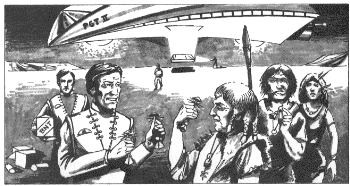
| System / Planet | Col. | Pop. | Grav. | Moons | Day | Star |
| Araks | Yellow | |||||
| Hentz | Y | HI | .7 | 0 | 25 | |
| Athor | Orange | |||||
| Yast | Y | MA | 1.0 | 2 | 15 | |
| Cassidine | Orange-Yellow | |||||
| Rupert's Hole | H | MIA | .9 | 0 | 20 | |
| Triad | * | HI | 1.1 | 1 | 30 | |
| Dixon's Star | Green-Yellow | |||||
| Laco | H | O | 1.4 | 1 | 60 | |
| Dramune | Orange-Yellow | |||||
| Inner Reach | D | MAI | .8 | 1 | 20 | |
| Outer Reach | * | MIR | 1.0 | 5 | 35 | |
| Fromeltar | Yellow | |||||
| Groth | D | LA | 1.2 | 0 | 45 | |
| Terledrom | D / V | HI | 1.0 | 3 | 60 | |
| Gruna Goru | Yellow | |||||
| Hargut | Y | HR | 1.1 | 1 | 20 | |
| K'aken-Kar | Red-Orange | |||||
| Ken'zah Kit | V | MA | .9 | 0 | 25 | |
| Kizk'-Kar | Yellow | |||||
| Zik-kit | V | MIR | 1.0 | 0 | 65 | |
| Madderly's Star | Yellow-Green | |||||
| Kdikit | H | MIA | 1.0 | 5 | 30 | |
| Prenglar | Yellow | |||||
| Gran Quivera | * | HI | 1.0 | 0 | 15 | |
| Morgaine's World | H | O | 1.5 | 4 | 40 | |
| Scree Fron | Orange-Red | |||||
| Histran | Y | O | .6 | 7 | 25 | |
| Hakosoar | Y | LAI | .9 | 5 | 50 | |
| Theseus | Yellow-Orange | |||||
| Minotaur | H | HI | 1.2 | 0 | 15 | |
| Timeon | Green-Yellow | |||||
| Lossend | H | LFI | .7 | 0 | 70 | |
| Truane's Star | Orange-Yellow | |||||
| Pale | * | MIR | .9 | 3 | 55 | |
| New Pale | H | LA | 1.4 | 0 | 20 | |
| White Light | Red-Orange | |||||
| Gollywog | H | HR | 1.0 | 0 | 50 | |
| Notes Hentz (Araks) is ruled by a religious clan, the Family of One. Everyone who lives there wears a uniform showing his job and position. Triad (Cassidine) is a major industrial planet where very high technology items are manufactured and sold. Inner Reach (Dramune) has an unusual local custom. The Dralasites that live there dye their skin various colors to show their mood for the day. The dyes wash off easily. Outer Reach (Dramune) is a gathering place for criminals and outlaws of all types. People there do not ask strangers how they earn their livings. Terledrom (Fromeltar) is ruled by a council of Vrusk companies and elected Dralasites. The companies control all trade with other planets, and consider smuggling a serious crime. The planet has rings that are visible from the ground during the day. Zik-kit (Kizk'-Kar) has very rich mining deposits. These are exported mainly to Terledrom for manufacturing. Zik-kit is controlled as a colony by the Terledrom government. Gran Quivera (Prenglar) is the hub of the Frontier Sector. The Star Law Rangers, Pan Galactic Corporation, and United Planetary Federation all have headquarters at Port Loren, the major city. Morgaine's World (Prenglar) is a UPF and Star Law base. The planet has rings. Pale (Truane's Star) is the starting point of the only possible starship route through the Xagyg dust clouds. The route to Zebulon was just recently opened.
|

Galactic Standard Time (GST) is the most popular time system in the Frontier. The GST system uses hours, minutes and seconds. An hour is 60 minutes long, a minute is 60 seconds long. A second is defined as the length of time needed for a beam of light to travel 300,000 km through a vacuum.
One year in Galactic Standard Time is 8,000 hours long. A standard year is divided into 400 20-hour days. Each day is divided into a 1 0-hour work period and a 1 0-hour rest period. These standardized days and years are used mainly for record-keeping.
Besides Galactic Standard Time, many planets have their own local time system. These local systems use GST seconds, minutes and hours, but the length of the day and year varies from planet to planet. The length of a local day is the time it takes for the planet to rotate through one complete day/night cycle. A local day usually is divided into equal periods of light and darkness, although these can vary if the planet's axis is tilted in relation to its orbit. A local year is the length of time the planet takes to make one complete revolution around its star.
Game Turns. A STAR FRONTIERS game turn is six seconds long. There are 10 turns in one minute. The referee should not break the game down into individual turns until the characters get into a fight, a chase or some other situation where a difference of a few meters or a few seconds can be important. When the characters are not under pressure, the referee should ignore game turns. He can either run the game in real time or use his own judgment to decide how much time the characters spend doing something.